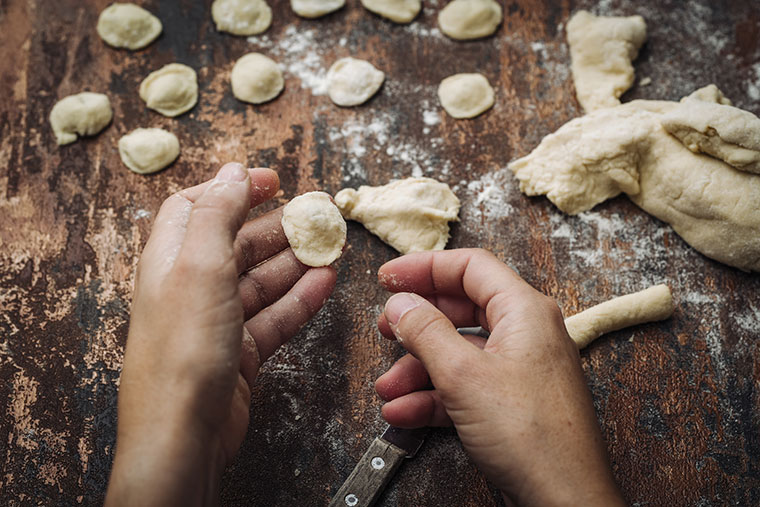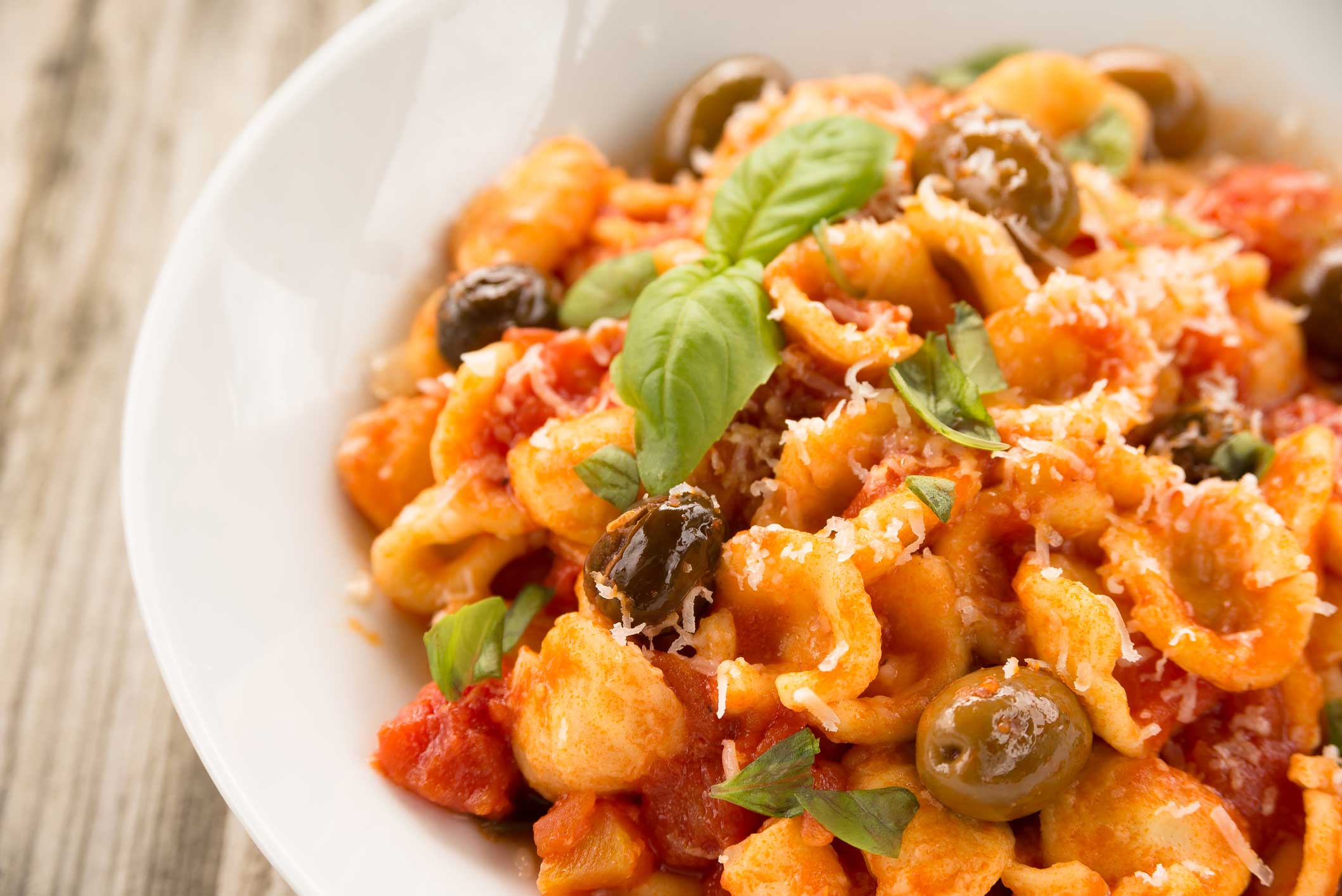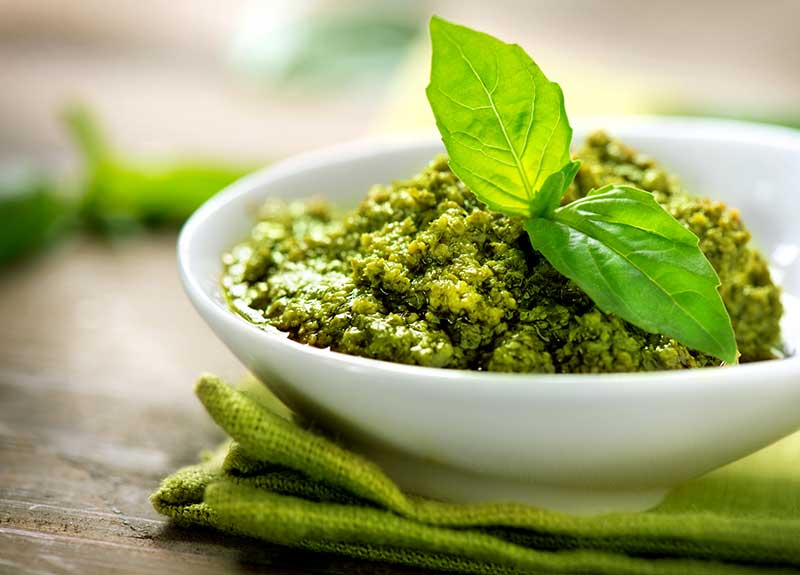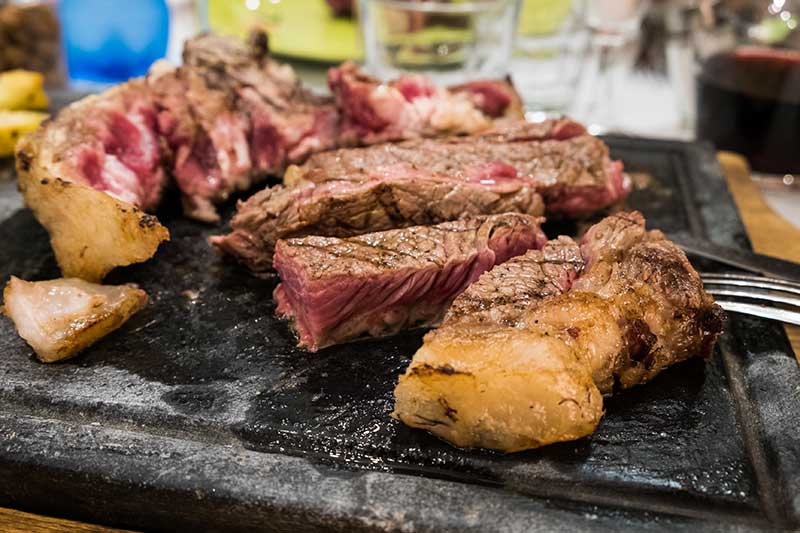This popular pasta shape typical of Salento and usually served with turnip greens or rabbit ragout sauce may have originated in France where, during the Middle Ages, wheat cultivation was common. The flattened shape given to this type of pasta allowed it to dry fast and to be stored for times of famine. It was the Anjou, rulers of the area between Basilicata and Apulia in the 12th century, who introduced orecchiette, bringing them by sea from France.

Another theory tells us orecchiette were created in Sannicandro di Bari, where Catholic inhabitants, during Swabian domination in the 12th and 13th centuries, maintained alive the Jewish tradition of preparing “Haman’s Ears” for Purim. Hence the name of orecchiette, or little ears.

Orecchiette, also known as chiancarelle, fiaffoli or recchjetedd in dialect, do not all have the same size and are made with water and durum wheat flour. The larger ones are usually served with vegetable based sauces, whereas the smaller ones are best with meat sauces. They are shaped using a special knife called sferra.

Only exception are the Orecchiette di Cisternino, also known as recch’ d’privt, that is “priest’s ears,” which are made with common wheat flour.
The most popular way to eat orecchiette is with turnip greens boiled with the pasta, which is then drained and sautéed with anchovies, garlic and extra virgin olive oil.






























